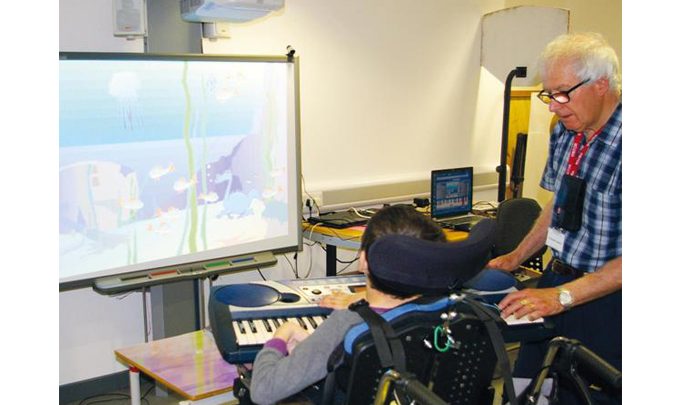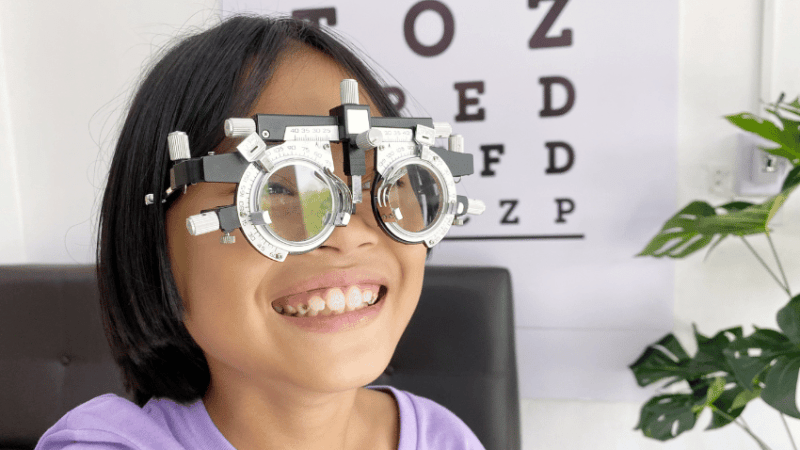Close Up On…Shorefields Special School: “We’ll Help Anybody”

With several ‘Outstanding’ ratings under its belt, and a demand for places that’s starting to outstrip its capacity, what can mainstream primaries learn from Shorefields special school? Callum Fauser finds out…

- by Callum Fauser
- Editor of Teach Secondary magazine

It’s a humid, drizzly day when I arrive at Shorefields special school in Clacton-on-sea. I’m there to meet with headteacher Jennifer Grotier, get a sense of how the school’s managed to secure three Ofsted ‘Outstanding’ ratings on the trot, and see whether there are any elements of their approach that could be successfully applied to mainstream primaries.
As it happens, Jennifer is a good person to ask about this, having previously worked for 17 years at a mainstream primary. As she recalls, “The head at my mainstream was leaving, so I was weighing up whether to go for the headship there – but then the deputy headship came up here. I’d taught in special needs previously, I met the head and we really clicked.”
Productive though this working relationship was, Jennifer found herself assuming the top job rather sooner than expected when the school’s head announced her departure within a year. “Having appointed an all-new SLT and achieved her third outstanding Ofsted, she wanted a new challenge,” Jennifer recalls. “I remember hoping that the new head would be as nice, but then she said to me ‘You should do it.’” Jennifer duly became acting head in September 2016, assuming full headship in February this year.
1. Building capacity
Shorefields in its current form opened in 2007, following the merger of two special schools – the Windsor School, for pupils with severe learning disabilities and the Leas School, for moderate disabilities. The intake is diverse, spanning ages 3 to 19 across its school and college settings, covering a ‘catchment area’ extending out to the village of Tiptree some 30 miles away.
In 2011 a Building Schools for the Future grant enabled the school to expand and redevelop its site, the legacy of which quickly becomes apparent during a tour of its grounds. Built around a red brick Victorian building, the school’s outdoor space gets plenty of use. Each of the 15 ground floor rooms has its own separate outdoor area, complete with seating and trampolines (the latter “Very good for calming pupils down”, notes Jennifer) while the first floor classrooms reserved for the school’s older year groups have their own enclosed balconies.
On the other side, further away from the building is a fenced off multi-games area, a go-kart track, bucket swings and even a zipwire. Shorefield’s outdoor learning facilities are extensive, to say the least – and also come in useful at times for providing some much needed additional classroom space.
As well as the dedicated soft play space, sensory areas, quiet rooms and medical wing might expect from a special needs school, there’s an independent living apartment on the first floor equipped with a fridge and washing machine to help impart life skills to the school’s FE learners. To help pupils identify different locations within the school, each room is identified via a low-level sign with text, Makaton signs and a small ‘object of reference’ pertaining to what it’s used for (an old attendance register in the case of the school office, a small book outside the library).
One point that comes up often throughout our conversation with Jennifer is the rising demand for what the school has to offer. “When I arrived we were on 122 pupils – we admitted our 141st last week.” she says. “We don’t have the building capacity to expand any further, but we need to because there are more and more pupils requiring our services.”
For the time being, however, there’s a determination at Shorefields not to compromise any more than necessary on its current set up – modest class sizes, a healthy teacher/pupil ratio and teaching staff with a considerable amount of specialist expertise. “We’d like to keep the numbers to eight or nine pupils per class,” Jennifer says. “We try to have a 2:1 ratio; if there’s one class teacher we’ll have three or four teaching assistants. For children needing extra support we’ll occasionally see ratios of 1:1.”
2. Sharing advice
Naturally, those numbers allow for far more time, space and flexibility in the classroom when compared with mainstream primaries. It’s something that Jennifer remains sensitive to, partly from her own teaching experience but also through serving on the steering group of the 31-strong Coast 2 Coast Teaching School Alliance based in neighbouring Jaywick.
She recalls having discussions with mainstream schools about the need for SLTs to take a more active role in overseeing their school’s SEND provision, rather simply delegating such matters to a SENCo who might not contribute to the school’s strategic decision-making. “It’s about getting SLTs and governors to adopt a more inclusive nature, looking at what we believe an inclusive SLT should be. We don’t want to be prescriptive, but in future, will a school’s SEN funding be contingent on hitting specific benchmarks for particular pupils?
“I often hear about primary schools that aren’t necessarily Ofsted Outstanding, but are otherwise very welcoming, accepting and therapeutic, with lots of children who thrive there. Their attainment might not be very good, but their progress will be, because their pupils’ special needs are being met.”
Beyond that, Jennifer is keen for her staff to be more mindful of such distinctions themselves. “We’ll help anybody, and often have visitors from other schools, but it’s not just about what mainstreams can learn from us – we can learn from mainstreams too. My wish is for all of our staff to spend a day at mainstream. We’re aiming for some of our teachers and TAs to do so next year.”
3. Sharing advice
One of the things that sets Shorefields apart is the emphasis placed on pupils’ long-term learning and development. “We accommodate ages 3 to 19, from children on P1 or P2 right up to children who will live independently and enter employment,” says Jennifer. “We recently saw one of our students pass his driving test first time – the first ever in the school’s history, which is just wonderful. We’re really proud of him.”
Assessment at Shorefields is currently based around PIVATs, aka P Scales. Following the recommendations of the Rochford Review, and comments about its assessment system in the school’s last Ofsted inspection, however, this is in the process of changing to a system Jennifer describes as “Based around looking at the child’s EHCP – examining what we perceive to be their outstanding steps for that year and measuring those, so that our assessments are completely individualised.”
Something else that comes across strongly from our time at Shorefields is the school’s commitment to staff development – from its enthusiastic embrace of apprentices and regular identification of TAs with the desire and potential to become teachers, through to its regular twilight CPD sessions for teaching staff (see ‘Therapies and training’).
Should someone wish to apply for a position at Shorefields, then, what should they expect? “We try hard to recruit only what the old head used to call ‘Shorefields people’.” says Jennifer. “It’s hard to define, but I know what I’m looking for – people who ‘get it’ and are going to bring something. We never have post-interview conversations where we say ‘We really need another teacher – do you think they’ll do?’ We only ever ask ‘Were they brilliant? Yes? Okay, where are they going to fit in?’”
Therapies and training
In addition to its 16 teachers and 80 or so TAs, Shorefields also enlists the services of a sensory OT, a speech and language therapist and two therapists specialising in music and play, plus a paediatric nurse and nursing assistant.
Beyond attending to the pupils’ needs, their role at Shorefields extends to developing the teachers’ and TAs’ therapeutic skills in the classroom via a series of twilight CPD sessions. Recent topics have included managing pica, epilepsy, medical training, Thrive, communication groups and Lego therapy.
Meet the staff
Verity Whiteside, interim head of learning
“We aim to give all of our children a voice and a means of making choices. It might be something very small – offering them two objects and having them tell us by feel which they’d rather have. Many of our children have so much done to them; some are medically ver y poorly with many frequent interventions. As much as we can, we strive to make our students independent and give them back some control.”
Alex Mccarthy, early years teacher
“Our children’s early years assessments are passed to their next teacher, who takes them on board. Hopefully, if the targets in there are accurately based on their EYFS assessments and their EHCP, they should prog ress naturally along a line towards their early learning goals. We review their targets every term, and if they’ve met a target too easily, or not come close to it over two terms, we’ll tweak it a bit to make it as appropriate as possible.”










